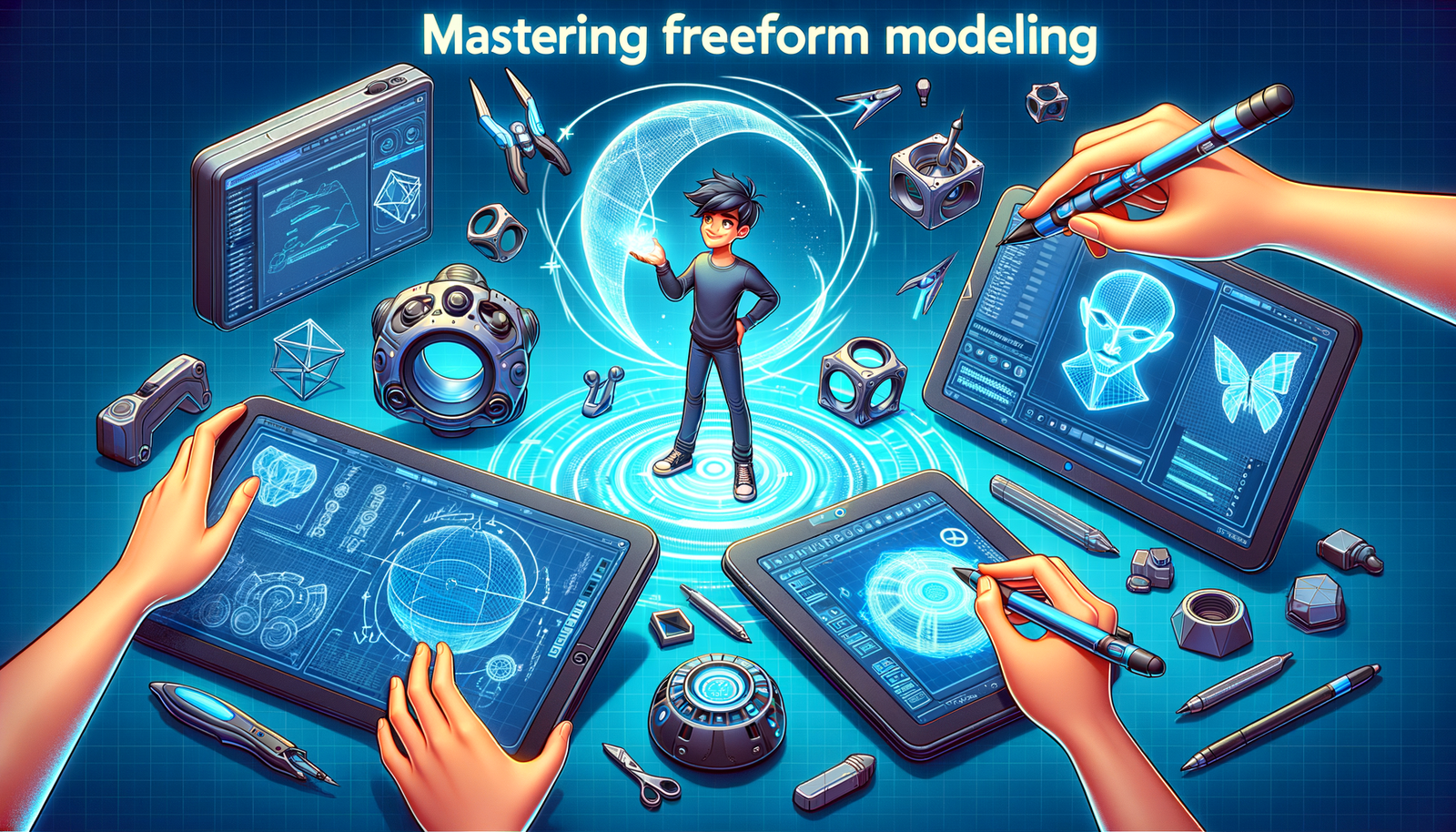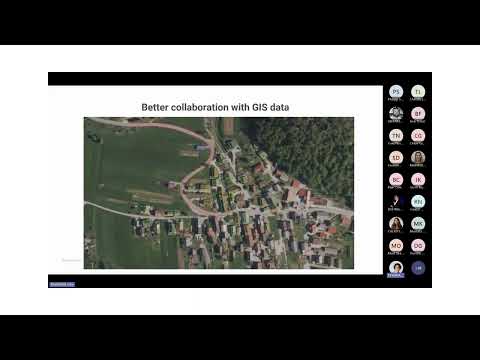Your Cart is Empty
Customer Testimonials
-
"Great customer service. The folks at Novedge were super helpful in navigating a somewhat complicated order including software upgrades and serial numbers in various stages of inactivity. They were friendly and helpful throughout the process.."
Ruben Ruckmark
"Quick & very helpful. We have been using Novedge for years and are very happy with their quick service when we need to make a purchase and excellent support resolving any issues."
Will Woodson
"Scott is the best. He reminds me about subscriptions dates, guides me in the correct direction for updates. He always responds promptly to me. He is literally the reason I continue to work with Novedge and will do so in the future."
Edward Mchugh
"Calvin Lok is “the man”. After my purchase of Sketchup 2021, he called me and provided step-by-step instructions to ease me through difficulties I was having with the setup of my new software."
Mike Borzage
Mastering Freeform Modeling: Revolutionizing Digital Design with Advanced Tools and Techniques
December 19, 2024 5 min read


Freeform modeling has revolutionized the way designers approach the creation of complex and organic shapes. As digital design continues to evolve, the ability to craft intricate geometries that were once impossible with traditional methods has become a fundamental skill in various industries. Understanding the principles and applications of freeform modeling is essential for modern designers looking to push the boundaries of creativity and innovation.
Introduction to Freeform Modeling
Freeform modeling refers to the process of creating complex, organic shapes that are not easily defined by standard geometric parameters. Unlike traditional modeling techniques that rely on precise dimensions and regular shapes, freeform modeling embraces irregularity and fluidity, allowing designers to explore forms that mimic the complexities found in nature. This modeling approach is significant in the context of design software because it empowers designers to transcend the limitations of conventional design paradigms.
The evolution of design techniques from traditional hand-drawn sketches and physical prototypes to advanced digital modeling has been profound. Early design methods were constrained by the tools available, often resulting in simplified forms that could be easily replicated. However, with the advent of powerful computational tools, designers can now manipulate digital models with unprecedented precision and flexibility. This shift has opened up new possibilities for creating organic and complex shapes that enhance both aesthetic appeal and functional performance.
Industries such as automotive, aerospace, and product design have particularly embraced freeform modeling due to the need for innovative and aerodynamic designs. In the automotive industry, for instance, the sleek curves and contours of modern vehicles are achieved through freeform modeling techniques. Similarly, the aerospace sector relies on organic forms to optimize airflow and structural integrity. In product design, ergonomics and user experience are enhanced by incorporating organic shapes that conform to human use, demonstrating the broad influence of freeform modeling across various design disciplines.
Tools and Techniques for Mastering Freeform Modeling
Mastering freeform modeling requires familiarity with advanced software tools that offer robust functionalities for creating intricate designs. Software platforms like Rhino, Blender, and Autodesk Alias have become essential in the designer's toolkit. These tools provide a range of features that cater to the demands of complex geometry creation, from precise control points manipulation to dynamic sculpting capabilities.
In Rhino, designers benefit from the software's strong emphasis on NURBS (Non-Uniform Rational B-Splines) modeling, which allows for the creation of smooth and mathematically precise surfaces. Blender, on the other hand, offers powerful subdivision surface modeling and sculpting tools, enabling artists to mold digital clay into any form imaginable. Autodesk Alias is renowned for its automotive and industrial design applications, providing high-level surface modeling tools that produce Class-A surfaces required for manufacturing.
Key techniques in freeform modeling include:
- NURBS Modeling: Utilizes control points and mathematical formulas to create smooth and intricate surfaces, essential for precision-driven industries.
- Subdivision Surface Modeling: Involves dividing surfaces into smaller polygons to achieve smoothness, ideal for organic shapes and character modeling.
- Sculpting Tools: Allows designers to 'sculpt' models as if working with physical materials, providing an intuitive approach to shaping complex forms.
These techniques facilitate the creation of complex geometry by offering flexibility and control over the modeling process. By combining these methods, designers can achieve a high level of detail and realism in their models, pushing the possibilities of what can be created in a digital environment.
Challenges in Freeform Modeling
Despite its advantages, freeform modeling presents several technical challenges. Managing data complexity is a significant concern, as intricate models can become resource-intensive, leading to slower processing times and potential software instability. Ensuring design accuracy is also critical, particularly when models need to meet specific engineering or manufacturing requirements. The high level of detail in freeform models can make it difficult to maintain precision across all parts of the design.
Designers also face cognitive and creative challenges when visualizing and implementing organic forms. The abstract nature of freeform shapes requires a strong sense of spatial awareness and creativity. Designers must be able to conceptualize complex geometries and translate them into digital models, which can be a daunting task. Overcoming these challenges often involves stepping outside conventional design thinking and embracing a more experimental approach.
To address these issues, designers can adopt several solutions and strategies:
- Iterative Design Processes: By continuously refining and testing designs, designers can gradually improve accuracy and manage complexity.
- Utilizing Parametric Design Principles: Implementing parametric modeling allows for adjustments to be made efficiently, as changes to parameters automatically update the model.
- Segmenting the Model: Breaking down the model into manageable sections can simplify the process and reduce computational load.
These strategies help designers navigate the intricacies of freeform modeling, enabling them to produce high-quality models without becoming overwhelmed by the complexity of the task.
Integrating Freeform Modeling with Traditional Design Workflows
Integrating freeform modeling with existing CAD workflows is crucial for a seamless design process. Traditional CAD systems are often optimized for parametric and feature-based modeling, which can create challenges when incorporating organic shapes. However, combining these methodologies allows designers to leverage the strengths of both approaches, enhancing the overall design and engineering process.
Interoperability between software platforms plays a vital role in this integration. Ensuring that models can be transferred smoothly between freeform modeling software and traditional CAD tools prevents disruptions in the workflow. This interoperability is achieved through standard file formats and data exchange protocols that maintain the integrity of the model's geometry and associated data.
For example, designers might use freeform modeling software to create the initial concept with complex surfaces and then import the model into a CAD program for detailed engineering analysis and preparation for manufacturing. This approach allows for the creative freedom of freeform modeling while ensuring that the final design meets technical specifications and production requirements.
Key considerations for successful integration include:
- Choosing Compatible Software: Selecting tools that support common file formats and data exchange standards.
- Understanding Conversion Processes: Being aware of how models are translated between systems to avoid loss of detail or accuracy.
- Collaborative Workflow Planning: Establishing clear processes for how different team members and departments will work together using various tools.
By carefully planning and implementing integration strategies, designers can take full advantage of freeform modeling techniques without sacrificing the efficiency and reliability of traditional design workflows.
Conclusion
The significance of freeform modeling in modern design software cannot be overstated. It has opened up new horizons for creativity and innovation, allowing designers to explore forms and structures that were previously unattainable. By mastering the tools and techniques of freeform modeling, designers can create products that are not only aesthetically pleasing but also functionally superior.
As advancements in computational power and artificial intelligence continue to accelerate, the potential of freeform modeling is set to expand even further. AI-driven tools may soon assist in generating complex geometries based on predefined parameters or learning from previous designs. This evolution will push the boundaries of design capabilities, enabling even more intricate and optimized creations.
Designers are encouraged to embrace freeform modeling techniques to unlock new levels of creativity and innovation. Whether working in automotive design, aerospace, product development, or any other field that benefits from organic shapes, the skills and knowledge gained from freeform modeling are invaluable. By staying at the forefront of these advancements, designers can contribute to the progression of their industries and the development of groundbreaking products.
Also in Design News

Surveying Simplified: Top BricsCAD Tools and Techniques | Bricsys Webinar
April 24, 2025 1 min read
Read More
Transforming Design Software with Advanced Customization and Adaptive User Interfaces
April 24, 2025 6 min read
Read MoreSubscribe
Sign up to get the latest on sales, new releases and more …



